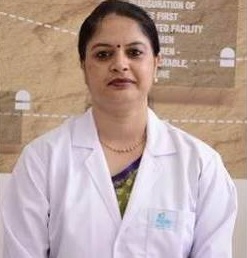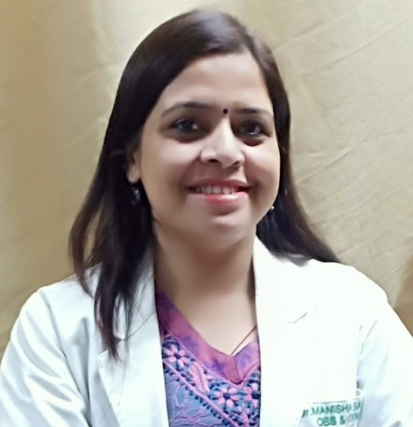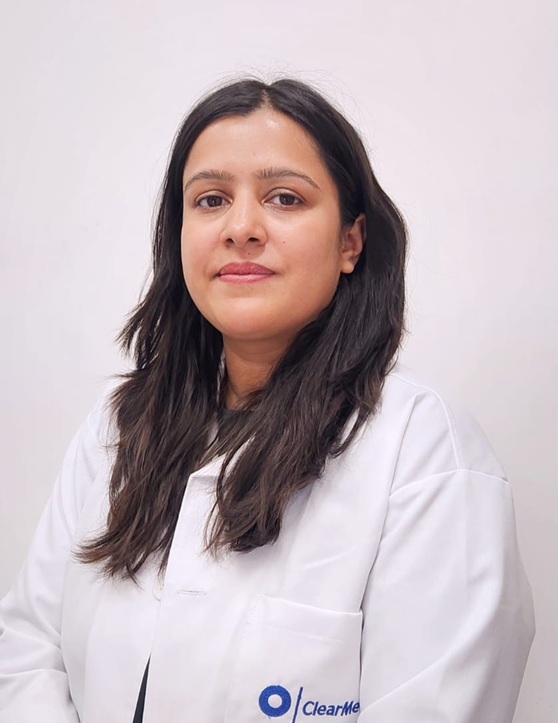Types of IVF - Treatment, Pregnancy, Cycles and Protocols

Quick Summary
- In vitro fertilisation (IVF) is a medical procedure that can help couples struggling with fertility issues conceive a child
- Different types of IVF treatments are available, and the best one for a particular couple depends on their unique circumstances
- IVF is used when a woman has blocked, or no fallopian tubes or a man has a low sperm count
- It offers a chance to people without the scope of conceiving a baby through normal methods
In vitro fertilisation, or IVF, is a medical procedure that can help couples struggling with fertility issues conceive a child. Different types of IVF treatments are available, and the best one for a particular couple depends on their unique circumstances.
In vitro fertilisation is a complicated sequence of methods done to help a female increase her fertility or avoid any kind of genetic problems while conceiving a child.
IVF is used when a woman has blocked, or no fallopian tubes or a man has a low sperm count. It offers a chance to people without the scope of conceiving a baby through normal methods. To learn more about the types of IVF treatment, keep reading the article.
What is IVF Treatment?
IVF is the most practical and effective form of assisted reproductive technology. However, the procedure is time-consuming, costly, and invasive. Under "normal circumstances", a woman's egg and a man's sperm join inside the woman's body.
However, in IVF, the fertilisation of the egg by the sperm in a laboratory dish. The meaning of the word "in vitro" is outside the body, and fertilisation is the attachment of the egg to the sperm.
In the IVF procedure, mature eggs are collected from the ovaries. They are put together with sperm in a laboratory. These fertilised eggs are moved to the uterus of the female.
There are three main approaches to types of IVF cycle with minimum or no drugs that are natural cycle IVF, mild stimulation IVF and in vitro maturation. One normal cycle of IVF takes around four to six weeks. If the actions have been divided into distinct parts, the procedure will take longer. The eggs and sperm may belong to the couple or a known or anonymous donor.
The success of IVF depends on many factors, such as age and the cause of infertility. For example, pregnancy with more than one baby may happen if more than one embryo is planted in the uterus, whereas if fewer are planted, there may be chances of no baby.


Types Of IVF Treatment
"What are the different types of IVF" - is a question that pops up in the head of most women trying to conceive. There are a variety of procedures involved in IVF. All of them are known by different names but come under the umbrella of IVF. The following are the types of IVF treatments -
Conventional IVF Treatment
Conventional IVF can be a successful treatment option for couples struggling with infertility due to various factors such as low sperm count, endometriosis, or blocked fallopian tubes.
Steps Involved in Conventional IVF
- Ovarian Stimulation: The woman undergoes ovarian stimulation using fertility medications to increase the number of eggs produced. This is done to increase the chances of successful fertilisation.
- Egg Retrieval: The eggs are retrieved from the woman's ovaries using a needle guided by ultrasound imaging. This is usually done under sedation to reduce discomfort.
- In Vitro Fertilisation: The retrieved eggs are fertilised in the laboratory using sperm from the male partner or a donor.
This happens when the sperm and egg are mixed together in a culture dish or through intracytoplasmic sperm injection (ICSI), where a single sperm is injected directly into the egg. - Embryo Culture: The fertilised eggs are cultured in a special growth medium for several days to allow them to develop into embryos.
It is expected to go for dedicated embryo transfer and pregnancy testing after 2 weeks of the transfer date.
Benefits of Conventional IVF
- Ability to Select the Healthiest Embryos: Conventional IVF allows fertility specialists to select the healthiest embryos for transfer, increasing the likelihood of a successful pregnancy and reducing the risk of genetic abnormalities.
- Options for Same-sex Couples and Single Individuals: Conventional IVF can offer same-sex couples and single individuals the opportunity to have a biological child by using donor sperm or eggs.
- Possibility of Freezing and Storing Embryos: Conventional IVF allows couples to freeze and store embryos for future use. This can be helpful for couples who want to space out pregnancies or who want to preserve their fertility for medical reasons, such as cancer treatment.
Success Rate of Conventional IVF
The success rate of conventional in vitro fertilisation (IVF) is influenced by various factors, such as the woman's age and the quality of eggs and sperm. Other factors that can affect the success rate of conventional IVF include the number of embryos transferred, the quality of the embryos, and the health of the uterus.
Some fertility clinics may transfer multiple embryos to increase the chances of pregnancy, but this can also increase the risk of multiple pregnancies and complications.
Mini IVF
There are different types of IVF protocols that need to be followed by the doctor and the clinic while conducting IVF pregnancy. The reduction in the number of protocols that govern IVF is known as mini IVF.
There are no standard protocols that govern mini IVF. It usually means less medication use, so that few high-quality eggs can be produced.
Although this type of IVF treatment means less backup option at the time of contingency, for some couples, it works perfectly.
Steps Involved in Mini IVF
Here are the steps involved in Mini IVF:
- Ovarian Suppression: Before starting the Mini IVF cycle, the patient may be given medication to suppress ovulation. This may involve taking birth control pills or a medication called GnRH agonist.
- Ovarian Stimulation: Unlike conventional IVF which involves high doses of fertility medications to stimulate the ovaries to produce multiple eggs.
Mini IVF typically involves a lower dose of oral fertility medication, such as clomiphene citrate or letrozole, or a low dose of injectable gonadotropins. The goal is to produce a smaller number of high-quality eggs. - Follicle Monitoring: The patient's response to the medication is monitored through blood tests and ultrasound scans to track the growth of the follicles (fluid-filled sacs in the ovaries that contain the eggs).
- Trigger Shot: When the follicles are mature, a trigger shot of human chorionic gonadotropin (hCG) is given to stimulate ovulation.
- Egg Retrieval: Approximately 36 hours after the trigger shot, the eggs are retrieved using a transvaginal ultrasound-guided aspiration procedure.
- Fertilisation: The retrieved eggs are then fertilised with sperm in the laboratory through either conventional IVF or intracytoplasmic sperm injection (ICSI).
- Embryo Transfer: After a few days of incubation, the embryos are transferred back into the patient's uterus using a thin catheter inserted through the cervix.
- Pregnancy Test: Approximately two weeks after the embryo transfer, a pregnancy test is done to determine if the procedure was successful.
Benefits of Mini IVF
Mini IVF can be beneficial for women looking for a less invasive, less expensive, and more natural approach to IVF. Here are some of the benefits of Mini IVF:
- Less Invasive: Mini IVF involves lower doses of medication, which can result in fewer side effects and less discomfort for the patient. It is also less invasive than conventional IVF, with fewer needle sticks and fewer doctor visits.
- Lower Cost: Mini IVF can be significantly less expensive than conventional IVF, as fewer medications are used, and fewer monitoring visits are required.
- Reduced Risk of Ovarian Hyperstimulation Syndrome (OHSS): OHSS is a potentially serious complication of IVF that occurs when the ovaries become swollen and painful due to the stimulation medication.
With Mini IVF, the risk of OHSS is greatly reduced due to the lower doses of medication. - Higher Quality Eggs: By using a lower dose of medication, Mini IVF can result in fewer eggs being produced but with a higher proportion of high-quality eggs. This can result in a higher success rate per cycle.
- More Natural: Mini IVF aims to mimic the natural menstrual cycle, resulting in a more natural process and fewer hormonal fluctuations.
Success Rate of Mini IVF
The success rate of Mini IVF can vary depending on various factors, including the age and fertility status of the patient, the number and quality of the eggs retrieved, and the expertise of the fertility clinic. The success rate of Mini IVF is lower than that of conventional IVF but higher than that of natural cycle IVF.
It is important to note that success rates can vary greatly depending on the individual circumstances of each patient and that the success rate of Mini IVF may not be as high as conventional IVF in patients with certain fertility issues.
It is important to discuss the potential success rates of Mini IVF with a fertility specialist to determine if it is the best option for a particular patient.
Donor IVF
In some cases, couples may need to use donor eggs, sperm, or embryos to conceive a child. This is known as donor IVF, and it can be a good option for couples who have genetic disorders or other medical conditions that make it difficult to conceive on their own.
Steps Involved in Donor IVF
The procedure involves using eggs and/or sperm from a donor in order to conceive. Here are the steps involved in Donor IVF:
- Selecting a Donor: The first step in Donor IVF is to select a donor. The donor can be anonymous or someone known to the intended parents. Donors are screened for medical and genetic conditions, and their health history is carefully evaluated.
- Synchronisation of Menstrual Cycles: If the intended mother receives the donor’s eggs, her menstrual cycle is synchronised with the donor's cycle using birth control pills or other medication.
- Ovarian Stimulation: The intended mother is given fertility medication to stimulate her ovaries to produce multiple eggs. If the intended father's sperm are used, he may also be given medication to increase the number of sperm produced.
- Egg Retrieval: The donor undergoes egg retrieval using a transvaginal ultrasound-guided aspiration procedure, which involves inserting a needle through the vaginal wall to collect the eggs.
- Fertilisation: The retrieved eggs are then fertilised with the intended father's sperm or donor sperm in the laboratory through either conventional IVF or intracytoplasmic sperm injection (ICSI).
- Embryo Culture: The resulting embryos are cultured in the laboratory for a few days until they reach a suitable stage for transfer.
- Embryo Transfer: One or more embryos are then transferred into the intended mother's uterus using a thin catheter inserted through the cervix.
- Pregnancy Test: Approximately two weeks after the embryo transfer, a pregnancy test is done to determine if the procedure was successful.
Benefits of Donor IVF
Here are some of the benefits of Donor IVF:
- High Success Rates: Donor IVF can result in high success rates as the eggs and/or sperm used are often from young, healthy donors, increasing the chances of successful fertilisation and implantation.
- Overcoming Infertility: Donor IVF can be a viable option for couples and individuals who are unable to conceive using their own eggs or sperm due to issues such as age, genetics, or medical conditions.
- More Control Over Genetics: Donor IVF allows intended parents to have more control over the genetic makeup of their children. They can choose donors with desirable traits and characteristics that they wish to pass on to their children.
- Reduced Risk of Genetic Disorders: Donor IVF can reduce the risk of genetic disorders and inherited diseases, especially if the donor has been thoroughly screened for genetic conditions.
- Increased Chance of Conception: Donor IVF can offer an increased chance of conception compared to adoption or other alternative methods of family building.
Success Rate of Donor IVF
The success rate of Donor IVF can vary depending on various factors, including the age and fertility status of the intended mother, the quality of the donor eggs and/or sperm used, and the expertise of the fertility clinic.
However, in general, the success rate of Donor IVF is higher than that of conventional IVF using the patient's own eggs.
Natural IVF
Natural IVF means encouraging the ovary to produce eggs through natural methods and not by medication. A close watch is kept on the patient through ultrasounds and blood tests, allowing the eggs to develop naturally without any medical assistance.
The follicles develop naturally, and doctors proceed with the IVF cycle as soon as the eggs reach the right measure and maturity.
Steps Involved in Natural IVF
The most crucial steps involved in Natural IVF include the following:
- Ovarian Reserve Testing: Before the start of a natural IVF cycle, the woman's ovarian reserve is tested to determine the number and quality of her remaining eggs.
- Monitoring Menstrual Cycle: The woman's menstrual cycle is closely monitored to determine the timing of ovulation. This involves regular ultrasound scans and hormone level checks.
- Egg Retrieval: Once the woman ovulates, the eggs are retrieved using a transvaginal ultrasound-guided aspiration procedure, which involves inserting a needle through the vaginal wall to collect the eggs.
The following steps for fertilisation, embryo culture, embryo transfer and pregnancy test are similar to the other IVF treatments mentioned above.
Benefits of Natural IVF
In this IVF, the natural menstrual cycle is closely monitored, and eggs are retrieved when they are naturally released. Here are some potential benefits of natural IVF:
- Reduced Medication: Natural IVF involves the use of minimal or no medication, which means there is a lower risk of side effects and complications associated with fertility drugs.
- Lower Cost: Since natural IVF uses fewer medications, it can be a more cost-effective option than traditional IVF.
- Fewer Eggs Retrieved: With natural IVF, only one or two eggs are retrieved per cycle, which means there is less risk of multiple pregnancies and associated complications.
- Safer: Since there are fewer medications involved, natural IVF may be a safer option for women who have underlying medical conditions that make them more vulnerable to side effects.
Success Rate of Natural IVF
As with any fertility treatment, a woman's age is an important factor that can affect the success of natural IVF. The older a woman is, the lower her chances of success.
Natural IVF may be more successful for women with a specific fertility diagnosis, such as tubal factor infertility, which means the fallopian tubes are blocked or damaged.
Success rates for natural IVF tend to increase with the number of cycles attempted. Some women may need to undergo multiple cycles to achieve a successful pregnancy.
The quality of a woman's eggs can also affect the success of natural IVF. Women who have a low egg reserve or poor egg quality may have lower success rates.
ICSI
Another type of IVF treatment is intracytoplasmic sperm injection (ICSI). This involves injecting a single sperm directly into an egg to fertilise it.
The ICSI technique is often used when the man has a very low sperm count, or the sperm has difficulty penetrating the egg. Intracytoplasmic Sperm Injection is an advanced technique of insemination.
Steps Involved in ICSI
In this procedure, a single sperm is insinuated into the egg to induce the fertilisation process. The sperm which has to be injected is chosen using sperm morphology.
The ICSI procedure takes place in an embryology lab. This is one of the methods used in IVF. The sperm is taken from the sperm drop and transferred into an ICSI needle, and injected into the egg. The specific steps involved in ICSI are:
- Ovarian Stimulation: Prior to the ICSI procedure, the woman undergoes ovarian stimulation using fertility medications to increase the number of eggs produced.
- Egg Retrieval: Once the eggs have matured, they are retrieved from the woman's ovaries using a needle guided by ultrasound imaging.
- Sperm Collection: The male partner provides a semen sample, which is then processed in the laboratory to obtain the healthiest and most motile sperm.
- Sperm Injection: A single sperm is selected and immobilised using a tiny needle. The needle is then used to inject the sperm directly into the centre of the egg.
- Embryo Culture: After injection, the fertilised egg (embryo) is placed in a special growth medium and incubated in the laboratory for several days to allow it to develop.
- Embryo Transfer: Once the embryos have developed, one or more of them are selected for transfer into the woman's uterus. This is typically done using a catheter guided by ultrasound imaging. One can proceed to the stage of pregnancy testing after two weeks of the transfer.
Benefits of ICSI
- Increased Chances of Fertilisation: ICSI can help overcome issues with low sperm count, poor sperm motility, or abnormal sperm shape, all of which can make it difficult for sperm to naturally fertilise an egg.
- Better Control Over Fertilisation: With ICSI, the fertility team has direct control over the fertilisation process, allowing for more precise placement of the sperm into the egg and increasing the likelihood of successful fertilisation.
- Fewer Failed Fertilisation Attempts: For couples who have previously attempted IVF without success due to fertilisation issues, ICSI may offer a higher chance of success.
Success Rate of ICSI
In general, ICSI has a high fertilisation rate, with around 70-80% of injected eggs being successfully fertilised. The live birth rate for ICSI can vary depending on several factors, including the quality of the embryos and the age of the woman.
Preimplantation Genetic Testing (PGT)
There is also the option of preimplantation genetic testing (PGT), which involves testing embryos for genetic abnormalities before they are transferred into the woman's uterus.
PGT can be particularly useful for couples who are at risk of passing on genetic diseases to their children. It's important to note that success rates can vary widely from one clinic to another, and that individual outcomes will depend on a variety of personal factors.
Steps Involved in PGT
The following are the general steps involved in the PGT procedure:
- Ovarian Stimulation: The woman undergoes ovarian stimulation using fertility medications to increase the number of eggs produced before the PGT procedure.
- Egg Retrieval: The eggs are retrieved from the woman's ovaries using a needle guided by ultrasound imaging.
- In Vitro Fertilisation: The retrieved eggs are fertilised in the laboratory using sperm from the male partner or a donor.
- Embryo Culture: The fertilised eggs are cultured in a special growth medium for several days to allow them to develop.
- Biopsy: On the fifth or sixth day of development, a small sample of cells is removed from each embryo using a fine needle. The biopsy is performed under a microscope, and it does not harm the embryo.
- Genetic Testing: The biopsied cells from each embryo are then analysed in the laboratory to screen for specific genetic disorders or chromosomal abnormalities.
- Embryo Selection: The healthiest and most genetically normal embryos are selected for transfer into the woman's uterus based on the results of the genetic testing.
- Embryo Transfer: The selected embryos are transferred into the woman's uterus using a catheter guided by ultrasound imaging. A pregnancy test can be performed after 14 days of the transfer.
Benefits of PGT
- Improved Efficiency of IVF: PGT can also improve the efficiency of IVF by allowing fertility specialists to select the most viable embryos for transfer.
This can reduce the number of IVF cycles needed to achieve a successful pregnancy, which can save time, money, and emotional stress for the couple. - Improved Chances of Successful Pregnancy: PGT can identify embryos with genetic abnormalities, allowing fertility specialists to select the healthiest and most genetically normal embryos for transfer.
This can increase the chances of a successful pregnancy and reduce the risk of miscarriage.
Success Rate of PGT
It is important to note that PGT can increase the chances of a successful pregnancy by reducing the risk of implanting embryos with genetic abnormalities.
The success rate of PGT can vary depending on many factors, and couples should discuss their individual situation with their fertility specialist to determine the best course of action.
Factors that affect IVF treatment
Several factors can impact the success of in vitro fertilisation (IVF) treatment. These factors can be related to the woman, the man, or the process of IVF itself. Here are some of the main factors that can affect IVF treatment:
- Age: Women between the ages of 24-34 have the highest rate of successful IVF procedures. During the 40s, a woman has reduced fertility which drops the success rate.
24-34 is the age when women are the most fertile. As a woman ages, her fertility declines, and the success rates of IVF decrease accordingly. - History: A couple who had a successful pregnancy has a higher chance of success than a couple who experienced frequent miscarriages or has fertility-related issues.
Women with a history of infertility or miscarriage may have a lower chance of success with IVF.
Certain medical conditions, such as endometriosis, PCOS, or uterine abnormalities, can impact the success of IVF. - Lifestyle: The way the patient is living is a big external factor that affects the success of IVF. Certain lifestyle factors, such as smoking, alcohol consumption, and obesity, can negatively impact fertility and the success of IVF.
Alcohol and smoking need to be given up at least 3 months before the procedure to have a high chance of pregnancy.
The weight of the patient needs to be healthy as it affects the hormones and the fertility drugs processed by the body. The patient must control the lifestyle so that there are high chances. - Ovarian Reserve: The number and quality of a woman's eggs can impact the success of IVF treatment.
- Sperm Quality: The quality of the sperm provided by the partner or donor can impact the fertilisation rate and the viability of the resulting embryos.
It's important to note that each individual's case is unique, and the success of IVF treatment depends on many factors that can vary from person to person. A qualified fertility specialist can evaluate each case and provide personalised treatment recommendations.
How to Choose The Right IVF Treatment?
Choosing the right IVF treatment involves several factors. It's important to consult with a fertility specialist who can evaluate individual circumstances and recommend the most appropriate IVF treatment options based on the couple's unique needs and goals.
Key factors that one must consider before finalising the IVF treatment include:
- Cause of infertility: The cause of infertility can impact the choice of IVF treatment. For example, if the male partner has a low sperm count, Intracytoplasmic Sperm Injection (ICSI) may be recommended.
- Age of the woman: Age is an essential factor to consider when choosing IVF treatment. Women over 35 years of age may have lower success rates with conventional IVF and may benefit from treatments such as egg donation or preimplantation genetic testing.
- Quality of eggs and sperm: The quality of eggs and sperm can impact the success of IVF treatment. If the quality of the eggs or sperm is poor, the couple may require more advanced treatments such as Intracytoplasmic Morphologically Selected Sperm Injection (IMSI) or In vitro maturation (IVM).
- Previous fertility treatments: Previous fertility treatments and their outcomes should be considered when choosing IVF treatment. The couple may require a different approach or technique based on their previous treatment results.
- Health conditions: Any underlying health conditions, such as endometriosis or polycystic ovary syndrome (PCOS), can impact the choice of IVF treatment.
- Financial considerations: The cost of IVF treatment can vary significantly depending on the type of treatment and location. Couples should consider their financial situation when choosing IVF treatment.
Conclusion
For many couples, the inability to conceive a child can be a source of immense emotional distress and impact their relationship and overall quality of life. IVF offers a way to overcome this challenge and can profoundly impact their lives. IVF can help couples with various fertility issues, including low sperm count, ovulation disorders, or damaged fallopian tubes.
Different types of IVF pregnancy have helped countless couples to achieve their dreams of becoming parents, and the impact it can have on their lives is immeasurable.
We at HexaHealth can help you better understand IVF technology and how it can help solve your infertility issues. Put your trust in our dedicated professionals and get started with your journey of growing the family. Get in touch with our experts today and learn more!
Frequently Asked Questions
What are the types of IVF?
What are the types of IVF treatment?
What is Natural IVF?
What is Frozen Embryo Transfer?
What are the types of IVF pregnancy?
What are the types of IVF cycles?
What factors decide the types of IVF treatment?
Which IVF treatment is safest and most successful?
What type of anaesthesia is used for IVF Procedure?
Which type of endometrium is good for IVF transfer?
Which types of twins are born in IVF?
What is the best age for IVF treatment?
How many rounds of IVF are normal?
What is IVF pregnancy cost in India?
How many days after IVF are you pregnant?
Which is best: IVF or ICSI?
What are the different types of IVF protocols?
References
All the articles on HexaHealth are supported by verified medically-recognized sources such as; peer-reviewed academic research papers, research institutions, and medical journals. Our medical reviewers also check references of the articles to prioritize accuracy and relevance. Refer to our detailed editorial policy for more information.
Last Updated on: 28 August 2024
Reviewer

Dr. Arti Sharma
MBBS, DNB Obstetrics and Gynaecology, Diploma In Cosmetic Gynaecology
9 Years Experience
Dr Arti Sharma is a well-known Obstetrician and Cosmetic Gynaecologist currently associated with Aesthetica Veda in Bengaluru. She has 9 years of experience in Obstetrics and Cosmetic Gynaecology and worked as an expert Obstetrician...View More
Author
HexaHealth Care Team
HexaHealth Care Team brings you medical content covering many important conditions, procedures falling under different medical specialities. The content published is thoroughly reviewed by our panel of qualified doctors for its accuracy and relevance.
Expert Doctors (10)
NABH Accredited Hospitals (5)
Latest Health Articles
Related Treatments



















 Open In App
Open In App